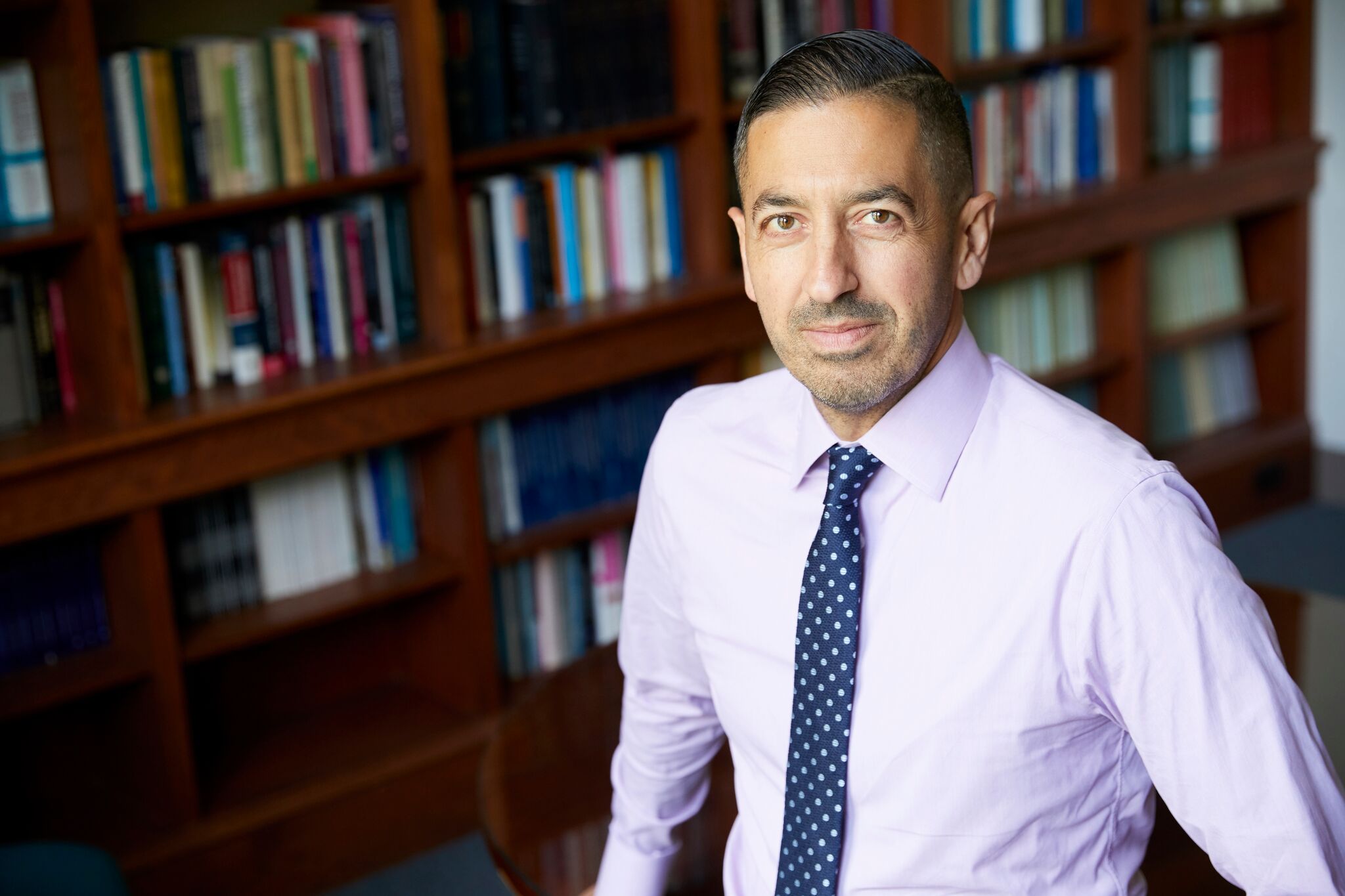A few weeks ago, the 2021 United Nations Climate Change Conference, known as COP26, was held in Glasgow, Scotland. The meeting reflected a global effort to address climate change. Climate change is a unique challenge, in that it poses an existential threat, yet its effects have accrued so gradually over time that, until recently, it has been difficult to rally support for addressing the problem. In considering climate change, I have found myself thinking about other slow-burning threats, and how we often fall short in addressing them. For example, on May 15, 2017, TIME magazine ran the following cover story:

The TIME cover story reflects one of the most perplexing realities of the COVID-19 pandemic: we saw it coming. We did not know specifically that a pandemic would strike in 2019. But we were long aware of the likelihood that such a contagion would emerge, and we knew it would probably happen relatively soon. Yet when COVID-19 did come, it looked very much like it caught the world unawares. Our response was a chaos of good ideas and bad ideas, good implementation and bad implementation. Many of these shortcomings can, of course, be ascribed to poor—or, at best, inconsistent—leadership. US leadership, in particular, was in the midst of immense disruption and transition when the pandemic struck, with the unprecedented figure of Donald Trump in the White House and a presidential election like no other culminating in November of 2020. It was perhaps unavoidable that these circumstances would shape the coherence of our pandemic response. Indeed, there is a temptation to lay all our failings during COVID at the feet of the unique political moment in which it unfolded. This temptation may be particularly acute for those of us in public health, who have an interest, human beings that we are, in not always facing our shortcomings as squarely as we might.
But faced they must be, as they beg the urgent question: if we saw the pandemic coming, why were we not more prepared for it? The question matters for preventing future pandemics; it also matters because pandemics are not the only slow-burning global threats we face. Nor, arguably, are they the most existential. Climate change is another challenge we have long seen coming, one with the potential to upend life on this planet far more than even COVID-19. Our warming earth is a slow-burning threat—literally—which we must address or face potentially dire consequences.
For this reason, it is worth looking at why we fail to adequately address challenges we can see coming from so far off. Some of the biggest threats we face are ones that emerge slowly over time. Creating a healthier world—or even simply preserving the world we have—demands that we learn to address these issues. Some thoughts, then, on how we can do so.
It strikes me that much of our failure to address slow-burning threats stems from our tendency to prioritize the urgent over the important. The distinction between the urgent and the important is something about which I have previously written, as have others. The important is what relates to core long-term priorities. At the collective level, these include addressing slow-burning challenges like pandemics and climate change. Ideally, the important represents a kind of North Star, guiding our broader efforts, even as we shift and improvise our way through our day-to-day business. It is that daily business that constitutes the urgent—the activities and issues which emerge suddenly, demanding immediate attention, consuming our waking hours. It is necessary that we deal with the urgent, while staying mindful that the urgent does not distract us from the important, attend to the day-to-day with our eyes nevertheless fixed on the long-term.
To use a military analogy, the important and the urgent are like strategy and tactics. Strategy is the broad-stroke planning meant to win a war over an extended period of time. Tactics are the maneuvers used within the framework of strategy—choices made in the context of an individual battle, for example, or in considering the daily logistical demands of maintaining an army. Likewise, the urgent constitutes the real-time details of our lives and work, while the important represents the broader trajectory to which we aspire.
The necessity of long-term thinking that focuses on the important, and the challenge of maintaining this thinking, is well-illustrated by one of the most famous psychological studies ever conducted: the Stanford marshmallow experiment. In the study, children were given a choice: they could either have one marshmallow immediately, or two marshmallows if they waited. In follow-up research, the children who waited longer for their marshmallow were found to have better life outcomes on a range of indicators. The experiment reflects, I think, something fundamental about why we can sometimes prioritize the urgent over the important, even when we know doing so harms us in the long run—or, at least, fails to maximize our potential. There is an appeal to engaging with the urgent because it offers us instant gratification by being more quickly and comprehensively addressed than the long-term issues that constitute the important. We can attend to the urgent work of the day, finish it, and feel accomplished, while the work of a decade or a generation takes much longer and does not lend itself to feelings of quick victory. This is to say nothing of the fact that the urgent is just plain distracting. It is what is in front of us day-in, day-out, and because it is so often in front of us, it can be difficult to see what is beyond it. Yet, as with the marshmallow test, taking the longer, more patient view is necessary for maximizing outcomes over time, even as we also engage with the daily demands of the urgent.
How, then, can we pay more attention to the important, so that it is not drowned out by the urgent? I suggest we can do so by embracing three key steps.
First, we need a relentless focus on what matters most for health, as a means of keeping our long-term priorities front-of-mind as we navigate the demands of the urgent. In past writing with colleagues, we identified what matters most as the upstream forces that shape health. These include politics, the environment, our social networks, the places where we live, work, and play, and the promotion of social, economic, and racial justice. Notably, each of these forces intersects with the urgent in key ways. Indeed, the urgent invariably reflects the downstream effects of the important, as our daily life is influenced by the larger forces that shape the world in which we live. When we see this link, it can become easier to keep the important in mind, as we see that what may have seemed like distractions are, in fact, daily reminders of the upstream forces of which they are a reflection.
Second, our focus on what matters most should inform investment in shoring up the foundational forces that support health. It is not enough to simply be aware of the important if this awareness does not motivate an allocation of energy and resources towards engaging with these key factors. In the US, we invest vast sums into health care, which is to say into doctors and medicines—which is to say into the urgent side of health. Truly shaping a healthier world means investing in creating the conditions where the urgencies of poor health do not emerge, because we have attended to the important. The same goes for a challenge like climate change. In recent years, there has been an increase in awareness of this issue, which is very much to the good. However, if this awareness does not support greater investment in addressing the causes of climate change, it cannot truly make progress on this most important of issues.
Third, we should embrace a view of the challenges we face which considers both the urgent and the important, widening our perspective on the issues that matter most for health. During the pandemic, for example, we saw how inextricably linked the urgent and important are, with the daily demands of navigating the COVID moment intersecting with broader issues. The crisis made these links clear to a degree that they perhaps had not before been in the national conversation, motivating action to address the urgent by way of the important. This action included the federal stimulus package, demonstrations against racial injustice, and the choices of voters on Election Day. Looking to a post-COVID future, it is important that we maintain this comprehensive focus, with an eye toward preventing slow-burning threats. Not the least of these is the potential for future contagion, the subject of my new book, The Contagion Next Time.
In considering the balance between the urgent and the important, I find my thoughts turning to a perhaps unexpected place: the work of Shakespeare. In his plays about history, Shakespeare is famous for commingling his depictions of great events—wars, social unrest, the crowning and overthrow of kings and queens—with scenes showing the everyday lives of people, and how their daily experiences were shaped by these broader forces. This balance is core to the vitality of the plays, to their capacity to fully reflect human life, depicting both the urgent and the important of our collective experience. Like a work of dramatic art, health is fundamentally a story. The way we tell it, what we choose to emphasize, shapes how healthy we can be in both the near- and long-term. For this reason, when faced with looming threats, it is necessary that we tell a story that captures health in its entirety, so that we may better act on the large-scale challenges we face, while there is still time.


